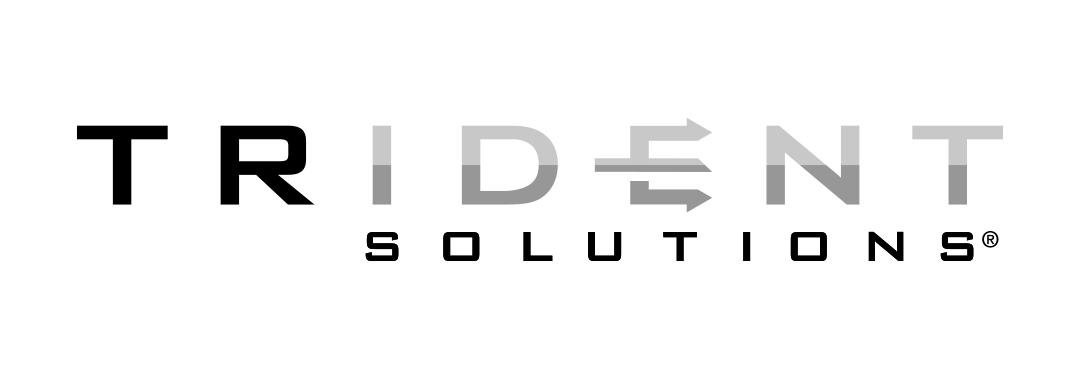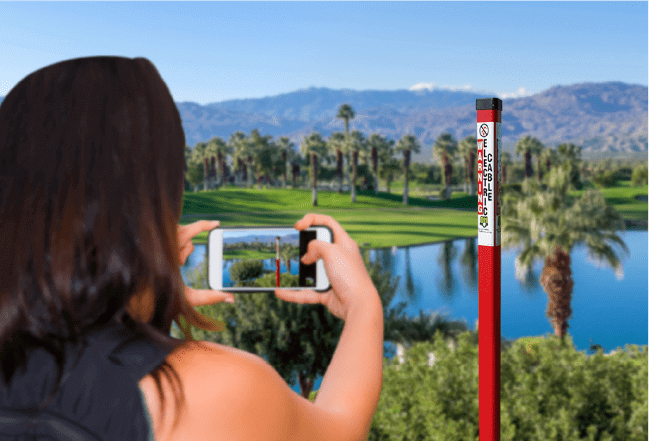This article was recently published in the 2023 July/August edition of ISE Magazine.
According to the 2021 DIRT report1 (Damage Information Reporting Tool), over 90,000 reported damages occurred to underground telecommunications and cable TV lines in the United States alone. The total number of damages has risen significantly since 2019, and the total estimated cost in the U.S. of these damages exceeded $350 million.
While damages to underground telecommunications lines don’t pose the same danger or financial impact as damages to gas utilities, the costs of labor, materials, litigation, and time to repair these facilities adds up quickly. When you factor in additional societal costs such as loss of emergency & 9-1-1 services or business closures, the true cost of these damages is exponentially greater.
Increased construction spending has consistently proven to correlate with an increase in damages, and the 39 million+ locate requests in 2021 was an increase of 8%. The 2023 DIRT report will be published this fall and the numbers are likely to increase again as funding from the Infrastructure Investment and Jobs Act directed to communities across the U.S., will continue to stress an already inundated damage prevention system.
An article from December 2022 by United Cooperative Services2 estimated that their members and contractors severed 35-40 fiber optics lines per week in 2021 and approximated their average cost to repair large fiber optic cables to be between $15,000-$20,000.
To avoid these costly incidents, facility owners should understand the root cause of previous damages and take proactive steps to prevent them in the future.
The 3 Root Causes for Most Damages
According to the DIRT Report, 68% of all damages to underground telecommunications utilities is due to three root causes:
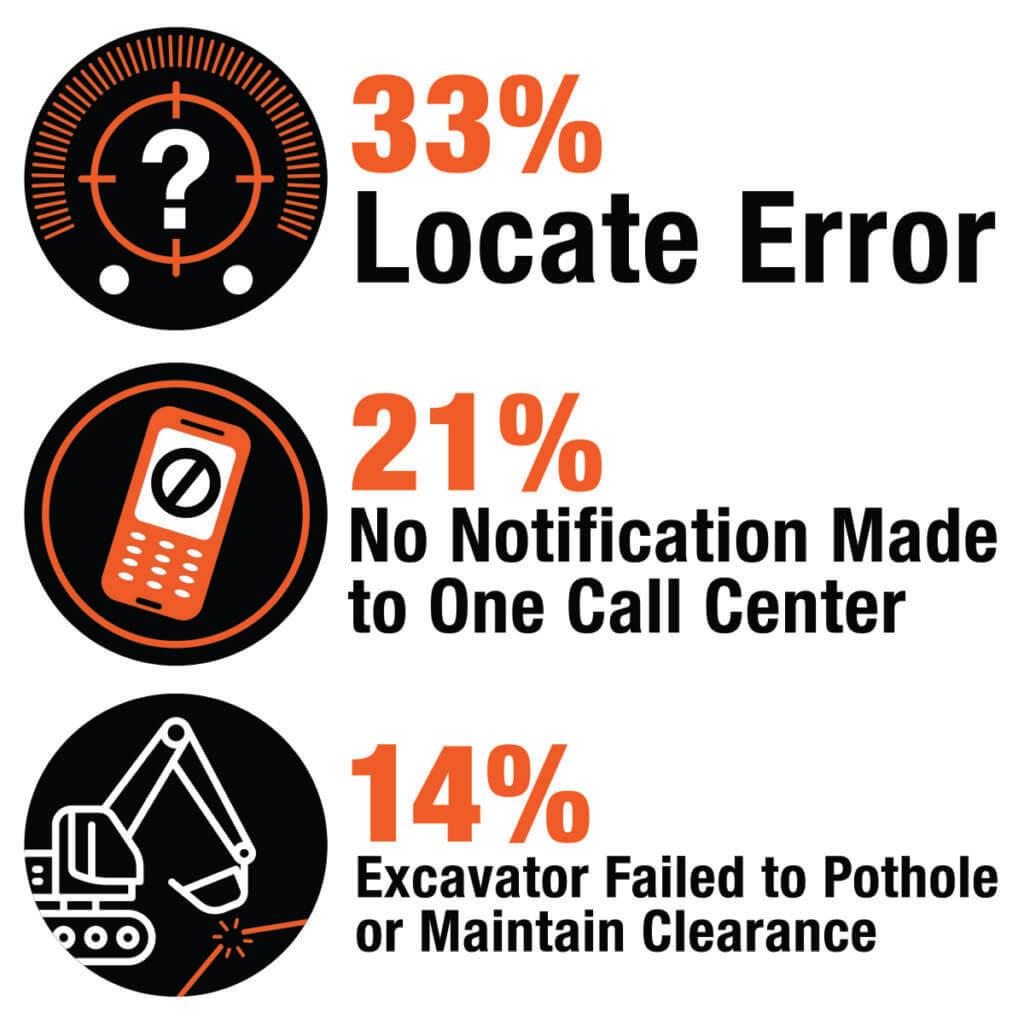
Tips for Reducing Locator Error
Utility locators receive the brunt of the blame from the damage prevention world. They work long hours under tight deadlines and face the increasingly high demand for utility locates. Private utility locate companies battling nationwide staffing issues only compound the stress.
Fortunately, there are innovative tools that can assist locators in performing their duties with increased accuracy and efficiency.
- Tracer Wire: One best practice is installing a tracer wire directly above telecommunications lines when they are installed. This tracer wire system should be corrosion, moisture, chemical, oil, impact, crush, and abrasion resistant. Many organizations already include the use of tracer wire in their specifications, and more states are pushing to legally require all underground utilities to install tracer wire with their assets.
However, not all tracer wire is created equal. Use of an extra high-strength copper clad steel wire (CCS) is typically preferred. (CCS) wire is not only cheaper, but also stronger than standard copper wire. It can provide locators a more accurate read on the location and depth of a company’s buried assets.
- Test Stations: Often, tracer wire is poorly maintained or exposed to the elements. An above ground test station can protect both the tracer wire and access terminals from severe weather and vandalism.
Flush mounted test stations can be mowed over while still providing a visible warning, and they’re ideal for areas where above ground test stations are not practical. It has a telescoping terminal board for quick access to the tracer wire. An added benefit of test stations is they provide a visible warning message about the presence of the facility 365 days a year.
- Hardware: Locating multiple utility lines can become a tedious task for the locator – having to locate lines separately and continuously reconnect to the different terminals significantly slows down their process.
Today, hardware exists that can be added onto a test station that enables the locator to “shunt” the connection and connect to all the facilities at once. Shunting or jumping each one of the laterals with the ground allows the locator to connect to the ground as well as any one of the four terminals that go to the laterals.
- Ground: Grounding anodes should be installed at all dead ends of the tracer wire system to complete the electrical circuit needed to enhance signal for locating purposes. Grounded tracer wire allows the locator to use a lower frequency which provide the most accurate results for locating. Using a higher frequency tends to bleed-over into other buried utilities, making the locate inaccurate.
The best way to ground a tracer wire system is to install a 1.5 lb. drive-in magnesium ground rod and an access point at each tracer wire dead end. An access point will protect the wire and provide a direct connection point for a utility locate transmitter to connect to the tracer wire. It also provides a connection point for the ground rod wire and allows the ground connection to be turned on and off, allowing you to control the signal on the target line.
- Connectors: A tracer wire system is only as good as its weakest connection. Using connectors that are water and corrosion resistant will protect vulnerable wire splices and keep the locate signal flowing throughout the tracer wire system.
Using cheap alternatives like electrical tape will result in corrosion. A corroded connection point can cause the locate signal to stop at the connection point, making the rest of the buried utility unlocatable, which could end in disaster for the excavator.
Failure to request a locate continues to be the largest root cause of damages to underground facilities, accounting for 25% of all reported damages in 2021. While 811 awareness continues to rise every year, thanks in large part to nationwide marketing campaigns and industry-wide education initiatives, the overall use of the system varies widely.
Continuing to Increase Awareness for 811
While we recognize excavators are aware of 811, the system is not used consistently enough, and our educational efforts may need to point towards understanding instead of awareness alone.
In 2018, the CGA conducted a nationwide survey3 of excavators asking the reasons behind their decision to not request a locate ticket. The top three responses were:
· Belief that project was in an area that didn’t need marking (30 percent)
· Belief that they were already aware of location of buried utilities (29 percent)
· Assumed they weren’t digging deep enough to hit utilities (23 percent)
Deploying above ground markers and signage all along your utility ROW can increase public awareness of the presence and approximate location of a buried utility. In many instances, the excavator simply didn’t see any marker in the vicinity, and just assumed the area was clear.
Last Lines of Defense
Even when the locate requests are made ahead of time, the utilities are located correctly, and they are marked accurately, there are still times human error cannot be avoided.
Failure to maintain clearance accounted for nearly 6,000 telecommunication damages in 2021, and that number is expected to increase in the upcoming fall report.
Underground warning tape made of a brightly colored, non-adhesive polyethylene material that is buried above underground utilities and serves as a warning to excavators that they are approaching a buried facility. It is a simple and cost-effective tool that can act as a last line defense for the buried asset.
A Complete Damage Prevention System
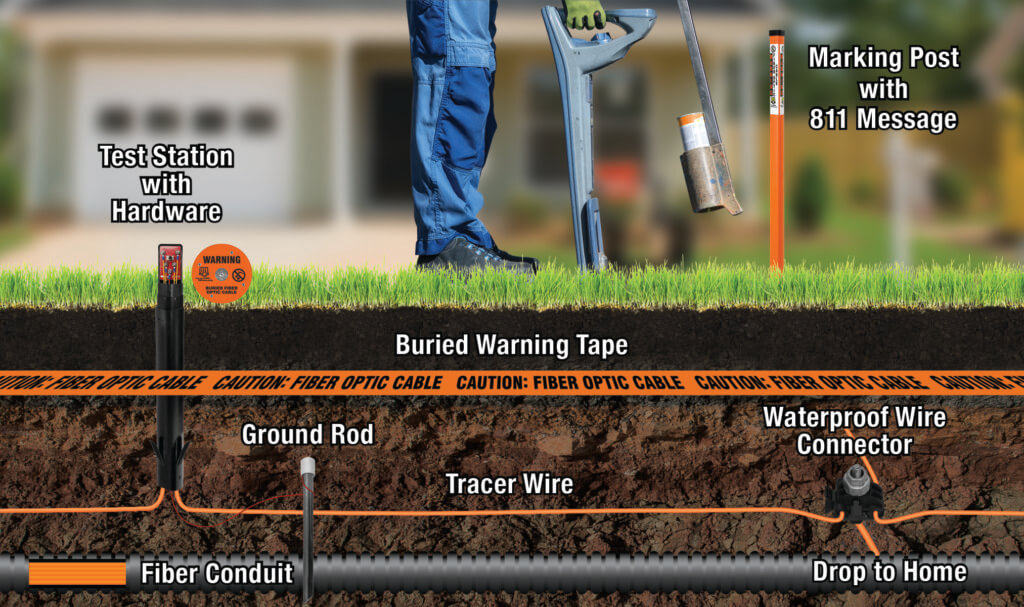
When facility operators utilize the tools reviewed above, they will build what Rhino Marking & Protection Systems calls A Complete Damage Prevention System: strategically deployed marking products designed to increase public awareness, improve utility locate accuracy, and mitigate 3rd party damages to underground assets.
As the industry continues to put more and more assets underground, it is important that all facility owners do their part in mitigating damages to those buried assets. The sole responsibility for damage prevention cannot be put on excavators. Damage prevention is a shared responsibility across all stakeholders in the telecom construction ecosystem.
Sources:
2021 Dirt Report: https://commongroundalliance.com/Portals/0/DIRT%20Report%202021%20-%20FINAL1.pdf?ver=2022-11-30-165941-267
Cutting is Costly: https://ucs.net/node/377
2019 CGA white paper: https://commongroundalliance.com/Portals/0/Library/2020/White%20Papers/CGA%20White%20Paper%202019%20-%20FINAL.pdf?ver=2020-08-14-125534-127
